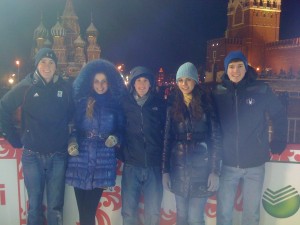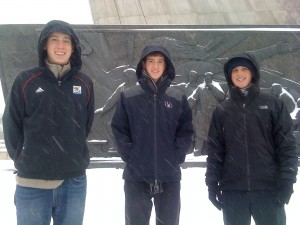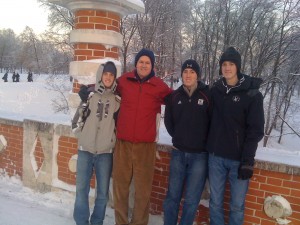US and EU diplomats stayed as far away as possible from Friday’s inauguration of President Lukashenko.
But in Moscow, Vladimir Putin posed Thursday with his visiting counterpart from Belarus. Turning to the microphones, he announced $4 billion in energy subsidies to Belarus, plus a brand new $6 billion nuclear power plant.
Is Belarus, Russia’s North Korea?
As a reporter, I have visited Belarus three times and North Korea three times. Compared to North Korea, a nation run by the Kim family like an 1830s American cotton plantation, Belarus is a land of milk and honey.
For decades, China has propped up North Korea, repeatedly facilitating the prolongation of the Kim dynasty rule. A collapse of Kim family control of North Korea, the Chinese reason, would mean two things: millions of impoverished northern Koreans flooding into a Chinese border area that is already dominated by ethnic Koreans. (Some Korean maps of “greater Korea” include Chinese territory.) More importantly, Chinese fears a North Korean collapse would mean American troops again on the Yalu River. The arrival of American troops on China’s river border in 1950, triggered the Chinese invasion and the restoration of North Korea as a buffer state.
In Russia’s case, Belarus stands between NATO expansion east to the Russian border. Although there may be a maximum of 100 American tanks left in Europe, Russian generals still play war games based on an armored threat rolling in from the west.
The threat is never far from people’s minds.
In Fortress Brest, a blockbuster movie that played across the Russian world during the Christmas holidays, a heroic band of Red Army soldiers hold out against the Nazi onslaught during the first days of World War II.
Brest, then on the western border of the Soviet Union, is now on the western border of Belarus. At one point in the film, a captured German soldier is interrogated about the Nazi invasion plans. The movie German’s answer drew an audible gasp from Saturday night patrons sitting around me in a theater in Minsk. “In one week,” he said, “we will be in Minsk.”
For the Kremlin, Belarus buys time.
This does not mean that the leaders in Moscow or Beijings like the leaders of their buffer neighbors. Both find them irritating, demanding, hard to control, and generally untrustworthy. But as foreign ministers have said for centuries: countries don’t have friends, they have interests.
That said, buffer states are inhabited by real people.
Twenty years ago, the peoples of Central Europe unexpectedly rose up.
Moscow lost a wide belt of buffer states it had nurtured for almost half a century. Vladimir Putin knows this from experience. As the Berlin Wall fell, he was barricaded in the KGB’s office in Dresden, East Germany while colleagues feverishly burned files.
In Belarus, the length and depth of the Lukashenko crackdown indicates that he believes he can only keep power through fear, by bullying the people. How long Belarussians will put up with him is anyone’s guess.
Two days before the election, I interviewed Andrei Sannikov. He said he was tired of living in a buffer state, and wanted to live in a normal country. Belarus Sannikov Buffer
Two days later, after Sannikov placed second in the election, riot police broke his legs and detained him incommunicado. Police then turned on his wife, Irina Khalip, yanking her out of a car while she was conducting a radio interview. She also is detained incommunicado. Child welfare officials then threatened to take their 3 year old son away from his grandmother and put him in an orphanage.
Thanks to Warsaw’s Belsat television, Washington’s Radio Liberty, and the internet, most Belarussians are believed to know this story. Maybe that is why the streets of Minsk were oddly empty Friday afternoon when President Lukashenko was driven to his fourth inauguration.
For a man who enjoys winter sports, it is appropriate that President Lukashenko has bought a large ski chalet in Krasnaya Polana — a ski resort in southern Russia.




